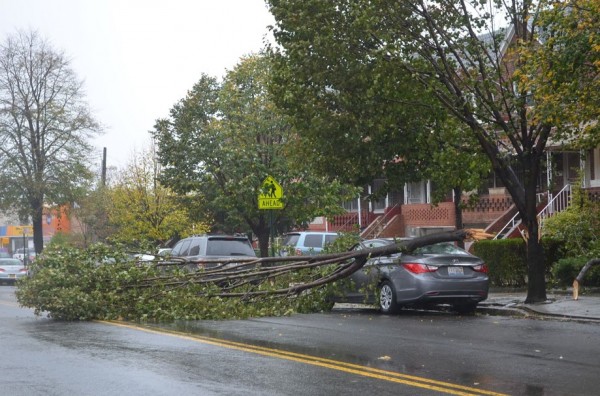The deployment recovery efforts are in full operation after the passage of Hurricane Sandy with 12 States (CT, DE, MA, MD, ME, NC, NH, NJ, NY, PA, VA, VT) in a federally-declared state of emergency. More than 8 million people are without electricity. Atlantic City, NJ is devastated, with 70 percent of the city underwater. New York’s 3 airports (JFK, LaGuardia, Newark) are closed for at least 3 days, and public transportation has been shut down since Sunday night, with any clear timetable for when trains and subways will re-start. of reopening. In total, close to 60 million people have been affected by Sandy and 40 people have lost their lives in the last 2 days.
Aftermath Hurricane Sandy
- New York -

Seeing the situation today it is difficult to understand that we are looking at the best case scenario in front of this “super”storm. Public institutions and the states took the Weather Center warnings very seriously, spending two days warning people, working out a schedule for the closing of railroads, subways, airports, buses, tunnels, bridges,and some hospitals, and ordering a mandatory evacuation of low lying zones. Sunday night the East Coast became a “ghost” region, with only emergency and recovery workers, police and firemen active and everything else shutdown. The states have learned from past experiences and mistakes; they didn’t wait for the towns to contact them but contacted the towns and counties with specific questions and offering their help, leaving the responsibility for executing emergency plans with the local agencies. Messages were very clear and well coordinated, the synchronization between State governors tangible was clear through live press conferences throughout the day, including updates and schedules. Message alerts were sent over mobile phones. The efforts met the need.
Now the assessment of the damages and the recovery operations are in motion. President Obama offered the support and expertise of the Federal Government including the military. He was very specific on the possibility of asking the military for their input and experiences on pumping the water out of the subway system as fast as possible and concluded by asking the State Governors to contact him directly at the White House if they feel that they don’t get the support they need in a timely fashion and are delayed by bureaucracy. The task ahead is enormous and unprecedented: some estimates talk of $50 billion in damages (to give context, New York City’s total budget for a year is $63 billion).
The discussion is starting to go beyond the recovery, looking at the future in another way. New York State Governor Andrew Cuomo was very clear that now we need to include storm and hurricane protection as part of the redesign and reconstruction, giving the example that the subway system might have been flooded with salt water, damaging electrical and navigation circuits. We should be able to avoid this type of situation in the future. We need to rebuild for the future as it looks like this type of disaster is happening more frequently that in the past.
It is clear that this type of situation, when the challenges are clear and the needs so beyond anything we can imagine, transcends everything — politics, race, gender, etc. — and predisposes people to be at their best. The secondary doesn’t exist anymore, it is like everyone is connected to the same frequency and looks at the same screen.
How can we get find posture in front of other types of disasters, like famine and malnutrition, unemployment, poverty, violence, nuclear weapons, global warning, pollution and economical disparity? Are we able to declare a state of emergency for famine?





